Intro
Discover the meaning of Purchase Order, a crucial document in procurement, explaining its purpose, process, and benefits in supply chain management and inventory control.
The concept of a purchase order is crucial in the world of business, particularly in the procurement and supply chain management sectors. It serves as a vital document that facilitates the buying and selling of goods and services between companies. In this article, we will delve into the meaning of a purchase order, its importance, and its application in various industries.
A purchase order, often abbreviated as PO, is a commercial document issued by a buyer to a seller, specifying the details of the goods or services being purchased. This document is a legally binding agreement between the two parties, outlining the terms and conditions of the sale, including the quantity, price, payment terms, and delivery details. The purchase order is essentially a request from the buyer to the seller to supply the specified goods or services, and it marks the beginning of the procurement process.
The importance of a purchase order cannot be overstated, as it provides a clear and concise record of the transaction. It helps to prevent misunderstandings and miscommunications between the buyer and seller, ensuring that both parties are on the same page. A well-structured purchase order should include essential information such as the buyer's and seller's contact details, the description of the goods or services being purchased, the unit price and total cost, the payment terms, and the expected delivery date.
Purchase Order Process
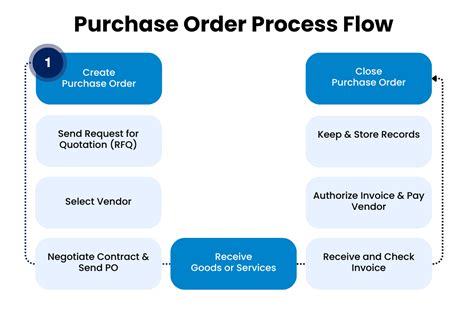
The purchase order process typically begins with the buyer identifying their needs and selecting a suitable supplier. The buyer then creates a purchase order document, which is sent to the seller for review and acceptance. Once the seller accepts the purchase order, they are obligated to deliver the goods or services as specified in the document. The buyer, on the other hand, is required to make payment according to the agreed-upon terms.
Key Elements of a Purchase Order
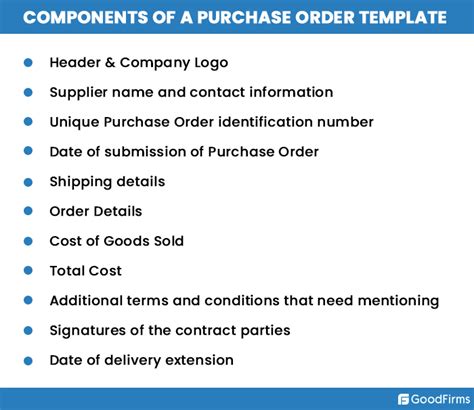
A standard purchase order document should include the following key elements:
- Buyer's and seller's contact information
- Description of the goods or services being purchased
- Quantity and unit price of the goods or services
- Total cost and payment terms
- Delivery details, including the expected date and location
- Any applicable taxes or discounts
- The purchase order number, which serves as a unique identifier for the transaction
Benefits of Using Purchase Orders
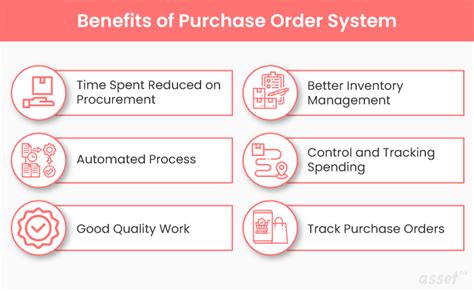
The use of purchase orders offers several benefits to both buyers and sellers. Some of the advantages include:
- Improved communication and reduced errors
- Clear and concise documentation of the transaction
- Enhanced accountability and transparency
- Better management of inventory and supplies
- Increased efficiency in the procurement process
- Reduced risk of disputes and misunderstandings
Types of Purchase Orders
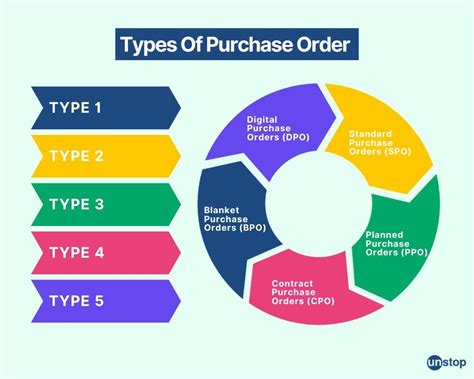
There are several types of purchase orders, each serving a specific purpose. Some of the most common types include:
- Standard purchase order: This is the most common type of purchase order, used for routine purchases.
- Blanket purchase order: This type of purchase order is used for recurring purchases, where the buyer agrees to purchase a specified quantity of goods or services over a set period.
- Contract purchase order: This type of purchase order is used for large or complex purchases, where the buyer and seller negotiate a contract outlining the terms and conditions of the sale.
- Planned purchase order: This type of purchase order is used for purchases that are planned in advance, where the buyer and seller agree on the delivery schedule and pricing.
Best Practices for Creating Purchase Orders
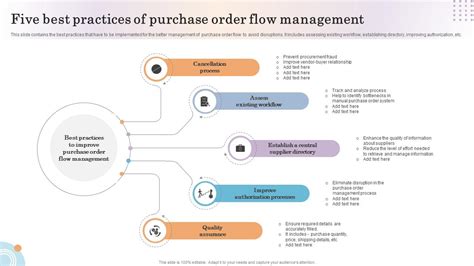
To ensure that purchase orders are effective and efficient, it is essential to follow best practices when creating them. Some of the best practices include:
- Clearly defining the scope of work and the goods or services being purchased
- Establishing a clear and concise payment terms
- Specifying the delivery details, including the expected date and location
- Including any applicable taxes or discounts
- Using a unique purchase order number for each transaction
- Reviewing and approving the purchase order before sending it to the seller
Purchase Order Software

In today's digital age, purchase order software has become an essential tool for businesses. This software allows companies to streamline their procurement processes, automate tasks, and improve efficiency. Some of the benefits of using purchase order software include:
- Improved accuracy and reduced errors
- Enhanced visibility and transparency
- Increased efficiency and productivity
- Better management of inventory and supplies
- Automated reporting and analytics
Common Mistakes to Avoid When Creating Purchase Orders
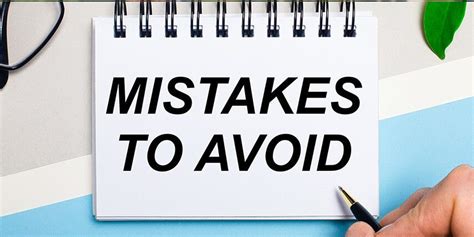
When creating purchase orders, there are several common mistakes to avoid. Some of the most common mistakes include:
- Incomplete or inaccurate information
- Failure to specify payment terms
- Not including applicable taxes or discounts
- Using incorrect or outdated pricing
- Not reviewing and approving the purchase order before sending it to the seller
Future of Purchase Orders

As technology continues to evolve, the future of purchase orders is likely to be shaped by digital transformation. Some of the trends that are expected to shape the future of purchase orders include:
- Increased use of automation and artificial intelligence
- Greater adoption of cloud-based purchase order software
- Improved mobility and accessibility
- Enhanced security and compliance
- Increased focus on sustainability and social responsibility
Purchase Order Image Gallery
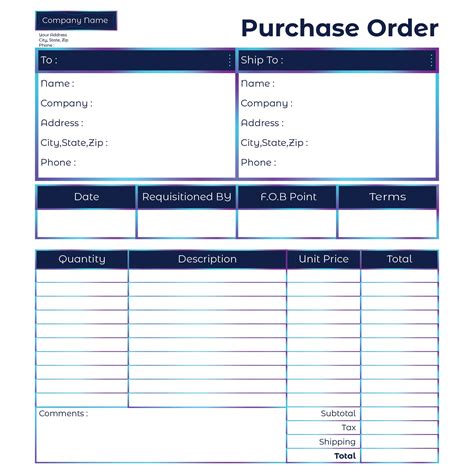
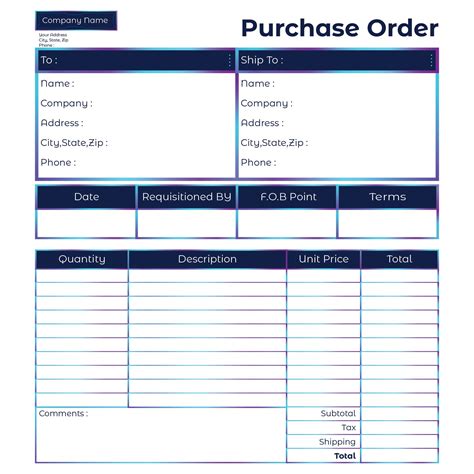
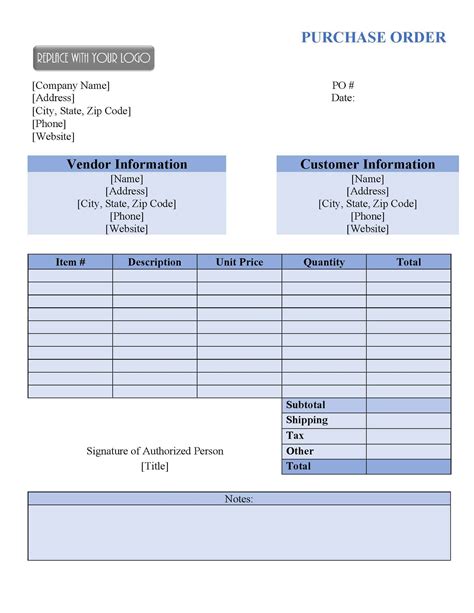
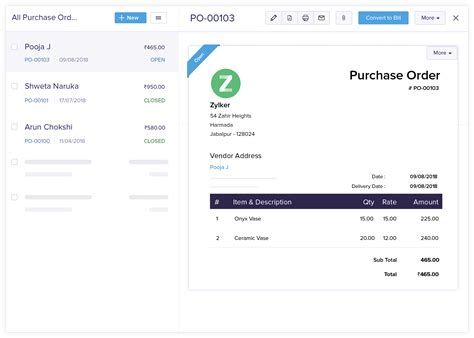

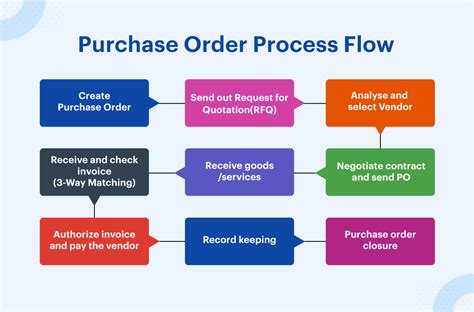
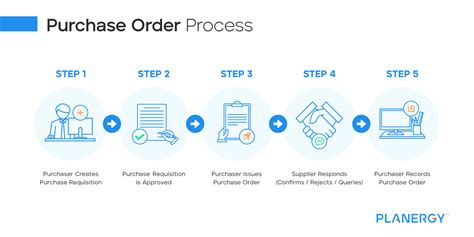
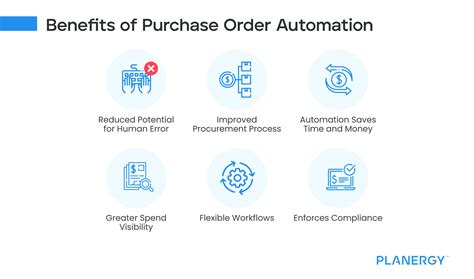
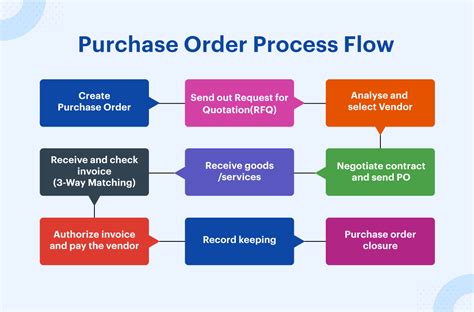
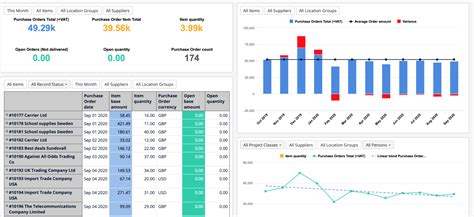
What is a purchase order?
+A purchase order is a commercial document issued by a buyer to a seller, specifying the details of the goods or services being purchased.
What are the benefits of using purchase orders?
+The benefits of using purchase orders include improved communication, reduced errors, and enhanced accountability and transparency.
What are the key elements of a purchase order?
+The key elements of a purchase order include the buyer's and seller's contact information, description of the goods or services being purchased, quantity and unit price, total cost and payment terms, and delivery details.
What is the difference between a purchase order and an invoice?
+A purchase order is a document issued by the buyer to the seller, while an invoice is a document issued by the seller to the buyer, requesting payment for the goods or services provided.
Can purchase orders be used for services as well as goods?
+Yes, purchase orders can be used for both goods and services.
In summary, purchase orders play a vital role in the procurement process, providing a clear and concise record of the transaction between the buyer and seller. By understanding the meaning and importance of purchase orders, businesses can improve their procurement processes, reduce errors, and increase efficiency. Whether you are a seasoned professional or just starting out, it is essential to have a solid grasp of purchase orders and their application in various industries. We hope this article has provided you with valuable insights and information on the topic. If you have any further questions or would like to share your thoughts, please do not hesitate to comment below.
